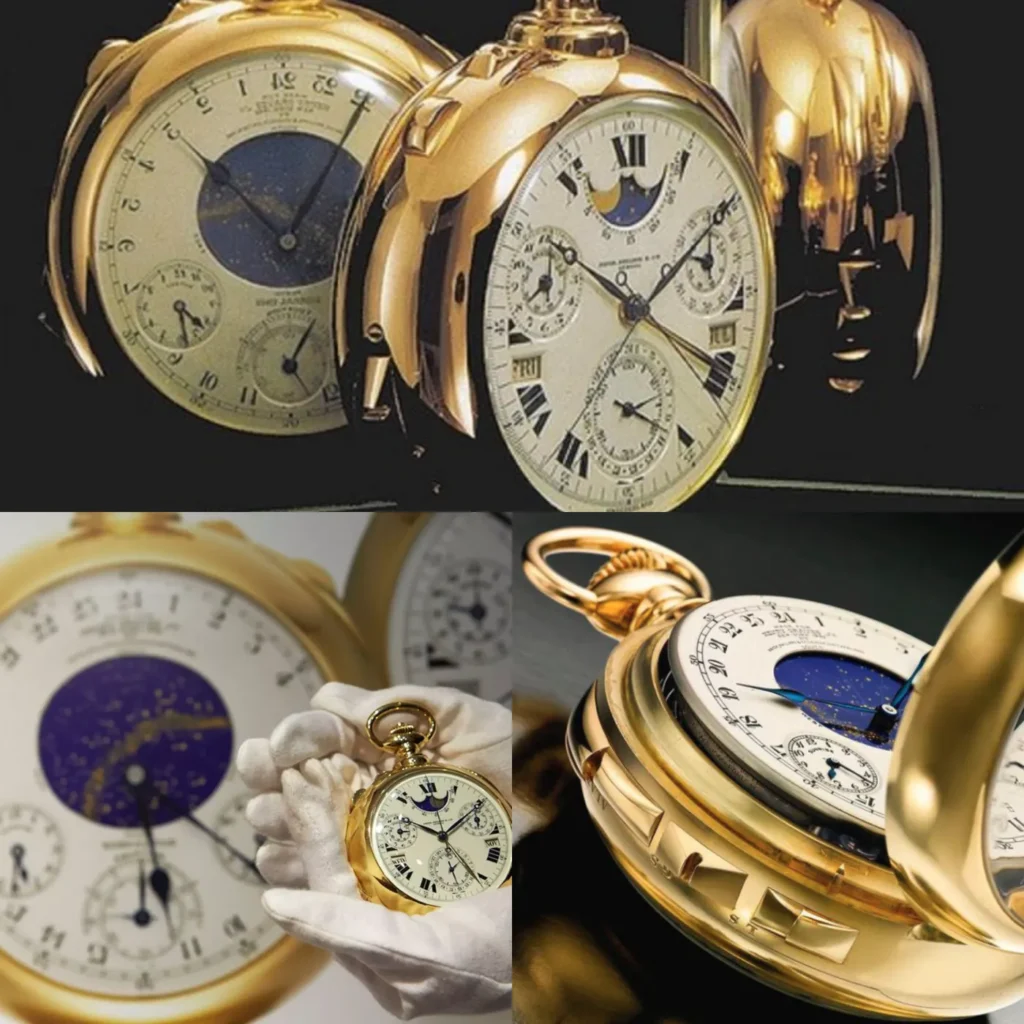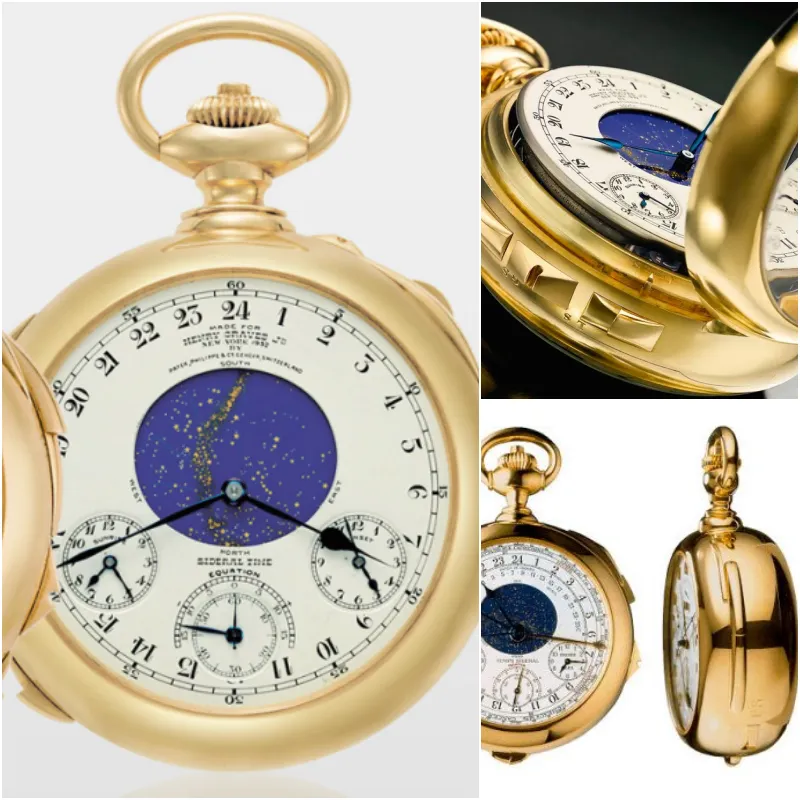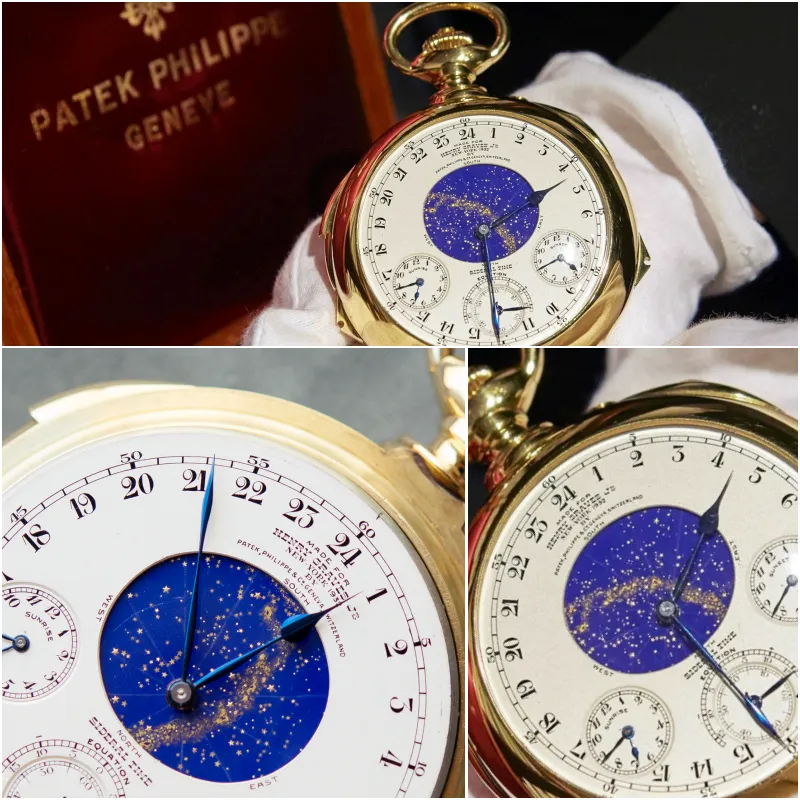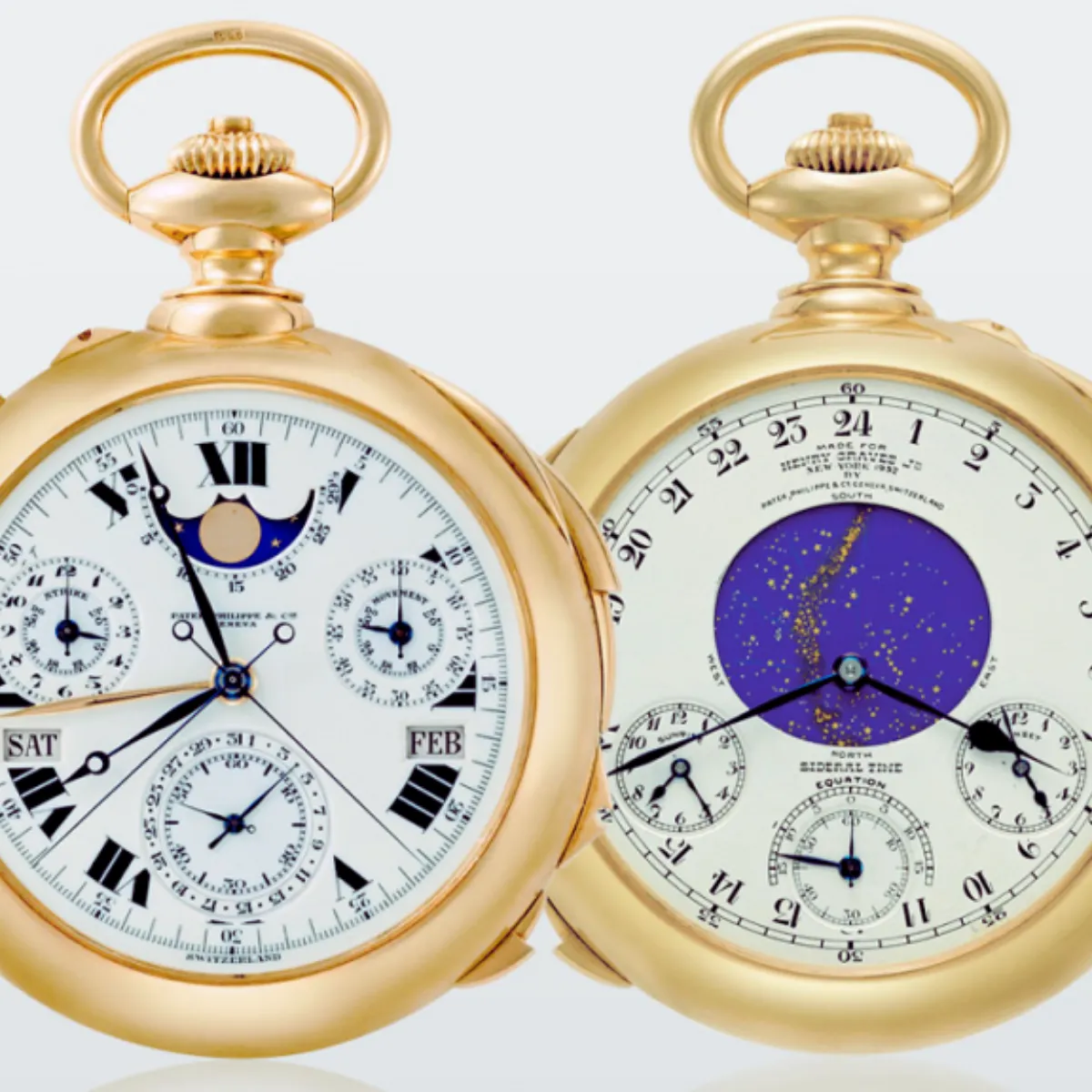
The Patek Philippe Henry Graves Supercomplication is renowned as one of the most intricate mechanical pocket watches ever crafted. Made from 18-karat gold, this extraordinary timepiece boasts 24 complications, exemplifying the exceptional artistry of Patek Philippe. Commissioned by banker Henry Graves Jr., the watch was designed to surpass the Grande Complication pocket watch owned by American automobile magnate James Ward Packard. Both Graves and Packard were influential figures in the world of watch collecting, known for supporting innovative horological masterpieces.

Table of Contents
ToggleIntricate Design and Craftsmanship
The Supercomplication comprises 920 individual components, including 430 screws, 110 wheels, 120 removable parts, and 70 handcrafted jewels. Each piece is meticulously designed on a miniature scale, showcasing the exceptional craftsmanship involved. This remarkable watch features a double-dial and double open-faced structure, which includes minute repeat capabilities that allow the wearer to hear the time, classic Westminster chimes, and different striking mechanisms known as Grande and Petite Sonnerie. Additionally, it has a split-seconds chronograph for precise timing, a perpetual calendar accurate until 2100, a display for moon phases, an equation of time that shows the difference between mean and solar time, a central alarm for alerts at designated times, and indicators for sunrise and sunset, providing information on daylight hours. A celestial chart depicts the night sky over New York City at 40 degrees 41.0 minutes North latitude. Measuring 74mm in diameter, with a case thickness of 36mm and weighing 536g, the watch exemplifies substantial presence.
Historical Significance
The design process for the Supercomplication spanned three years, followed by an additional five years for manufacturing. Delivered to Henry Graves on January 19, 1933, the watch held the title of the world’s most complicated mechanical timepiece for over 50 years. It features a total of 24 functions, including a celestial map of New York as seen from Graves’s Fifth Avenue apartment. Although the record was surpassed in 1989 by the Patek Philippe Calibre 89, the Supercomplication remains the most complex mechanical watch created without computer assistance.

Ownership Journey
After Henry Graves Jr.‘s death in 1953, the Supercomplication was inherited by his daughter Gwendolen, who later passed it to her son, Reginald ‘Pete’ Fullerton, in 1960. In 1969, Fullerton sold the watch to Seth G. Atwood, founder of the “Time Museum,” for $200,000 (approximately $1.2 million today). The watch remained in the Time Museum in Rockford, Illinois, until its closure in March 1999. Portions of the collection were exhibited at Chicago’s Museum of Science and Industry from January 2001 to February 2004 before being sold.
Record Auction Price
On July 10, 2014, Sotheby’s announced that the pocket watch would be auctioned again in November 2014. On November 11, 2014, the watch sold in Geneva, Switzerland, for 23,237,000 Swiss Francs, equivalent to $24 million USD at that time. This price set the record for the highest amount ever paid for a timepiece, encompassing both pocket watches and wristwatches.

The Patek Philippe Henry Graves Supercomplication stands as a testament to artistry and innovation in horology. Its intricate design, historical significance, and record auction price secure its status as a pinnacle of watchmaking excellence. Whether you are a collector or an admirer of fine craftsmanship, the Supercomplication remains an unparalleled symbol of luxury and legacy in the world of timepieces.






